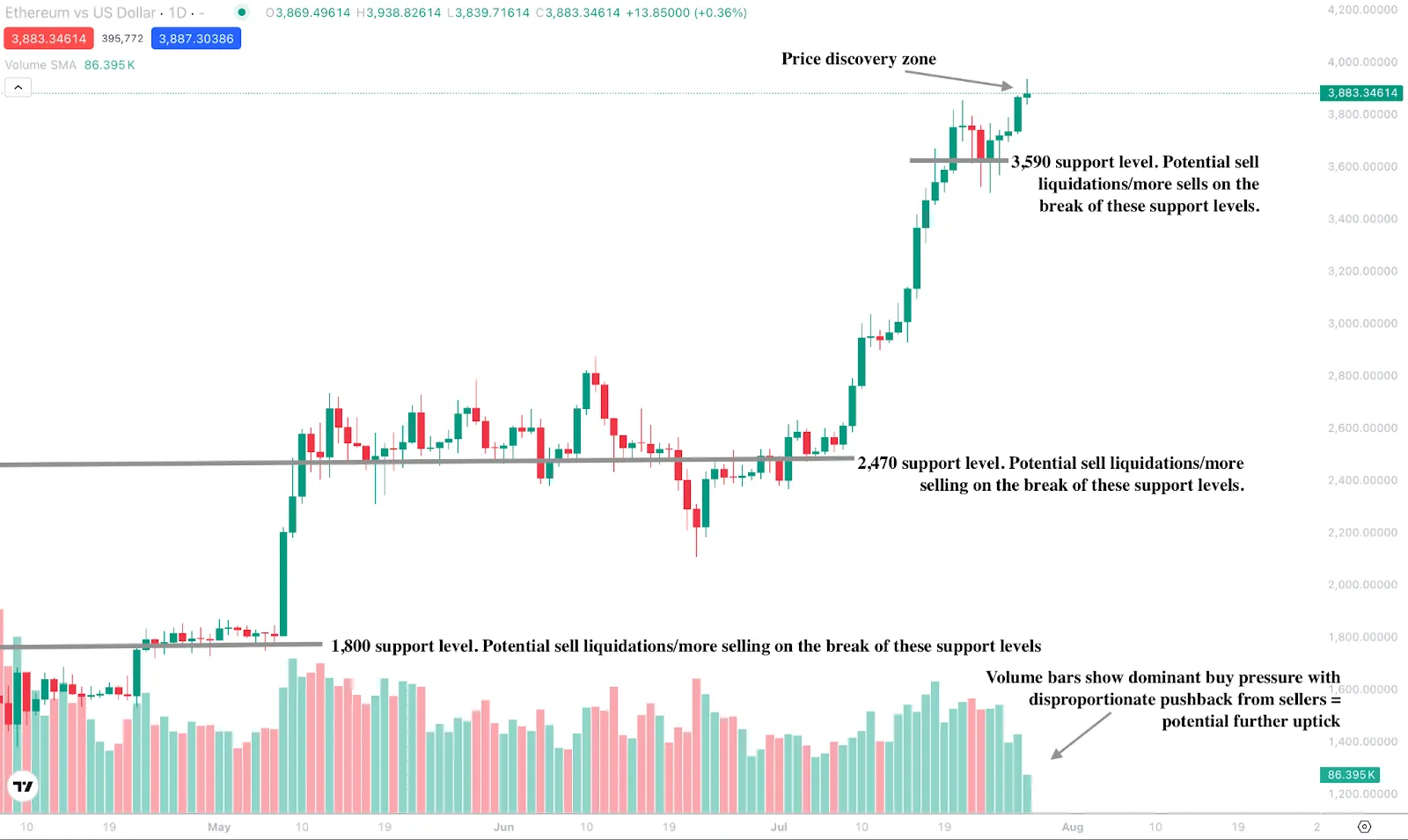How Ethereum ETFs could supercharge the next bull run

Note: As of August 2025, we no longer offer the Deriv X platform.
Reports show that Ethereum’s been quietly stealing the spotlight - not with a flashy price spike, but with something potentially more powerful. Inflows into Ethereum ETFs have exploded, crossing the $10 billion mark and turning heads across traditional finance. It’s the kind of quiet accumulation that often sets the stage for something much bigger.
Analysts say this isn’t your typical crypto frenzy. It’s structured and institutional and could spark a feedback loop where rising demand drives more buying - and eventually, much higher prices. The question now is whether this ETF-driven momentum has what it takes to launch Ethereum into its next major rally.
Ethereum ETF inflows cross $10B: What it means for price
When money flows into an ETF like $ETHA, the fund has to buy the underlying asset - in this case, Ethereum. That increases demand. More demand pushes the price up, drawing in more attention and, yes, more inflows. Rinse and repeat.
It’s called the flywheel effect, and we’ve seen it before. Bitcoin ETFs lit up in early 2024, setting off a chain reaction that helped push BTC to new all-time highs. Now it’s Ethereum’s turn - but the pace is even more interesting.
$ETHA reached $10 billion in assets under management in just 251 trading days, making it the third-fastest ETF in history to hit that milestone. Only Bitcoin’s $IBIT and $FBTC got there faster. And over the past ten days, $ETHA’s AUM has doubled - a strong sign that institutional interest isn’t cooling off anytime soon.

ETH institutional demand
According to analysts, this surge isn’t just about ETFs. Public companies are starting to build Ethereum treasuries, mimicking the playbook that made Bitcoin famous in 2021. Firms like BitMine Immersion and SharpLink Gaming have accumulated over $1 billion in ETH holdings each, a move that signals growing confidence in Ethereum as a long-term store of value.

Meanwhile, according to Glassnode, the number of first-time ETH holders has increased 16% since early July, and exchange balances have dropped to their lowest levels since 2016.

Combine that with over 28% of ETH staked, and you’ve got a recipe for a supply squeeze. There’s less ETH sloshing around, just as demand is surging.
So why isn’t the price soaring?
That’s the big question on crypto X, and it’s a fair one. Despite billions flowing in, Ethereum is still trading around 22% below its all-time high, hovering near $3,800.
Part of the answer lies in how institutions behave. This isn’t the wild west of ICOs or the 2017 meme coin mania. Institutional capital tends to be longer-term and slower-moving, favouring steady accumulation over sudden FOMO. And let’s not forget - this wave of demand may be replacing existing ETH positions rather than injecting brand new capital into the market.
Another potential factor is regulation. Since the SEC approved Ethereum ETFs in 2024, the market has matured significantly. That brings stability but also tempers the euphoria that used to send prices rocketing overnight.
A bull market without the euphoria
Interestingly, 94.4% of ETH’s supply is now in profit, according to Glassnode. Yet sentiment remains surprisingly muted. The NUPL score sits in the “optimism” range, far from the overheated highs we usually see at market tops.
Even open interest in Ethereum futures - which has surged to over $56 billion - isn’t flashing red. Funding rates are still moderate, suggesting traders aren’t massively over-leveraged. In other words, Ethereum has room to run before things get frothy.
This could be a rare sweet spot: strong fundamentals, rising institutional demand, and a market that isn’t yet overextended.
Ethereum’s quiet evolution
Beyond price and ETFs, Ethereum itself is evolving. The network recently raised gas limits, and blocks were filled instantly. NFTs, once the dominant use case, are now sharing space with stablecoin transactions, rollup proofs, and modular DeFi apps. Ethereum is becoming the infrastructure layer for Web3 finance, and Wall Street is finally catching on.
Add to that the recent GENIUS Act, which opens the door for more stablecoin issuance from traditional firms, and Ethereum’s role as financial plumbing starts to look even more important. This isn’t just a crypto asset anymore - it’s becoming critical infrastructure.
Ethereum’s ETF moment might not look like a rocket ship - at least not yet. But make no mistake: the foundations are being laid for something much bigger. With supply tightening, institutional inflows rising, and on-chain activity maturing, all the ingredients are there for a breakout.
Whether that breakout happens next week or next quarter, one thing is clear: this isn’t 2017 all over again. It’s slower, smarter, and backed by real capital. And if the flywheel keeps turning, Ethereum might just lead the next bull run - one ETF inflow at a time.
At the time of writing, the surge towards $4,000 is still on, and prices are in price discovery mode. If we see a price reversal, though, prices could find support at the $3,590 support level. If we see a price crash, we could see prices finding support at the $2,470 and $1,800 support levels.

Trade ETH price action with a Deriv MT5 account today.
Disclaimer:
The performance figures quoted are not a guarantee of future performance.



